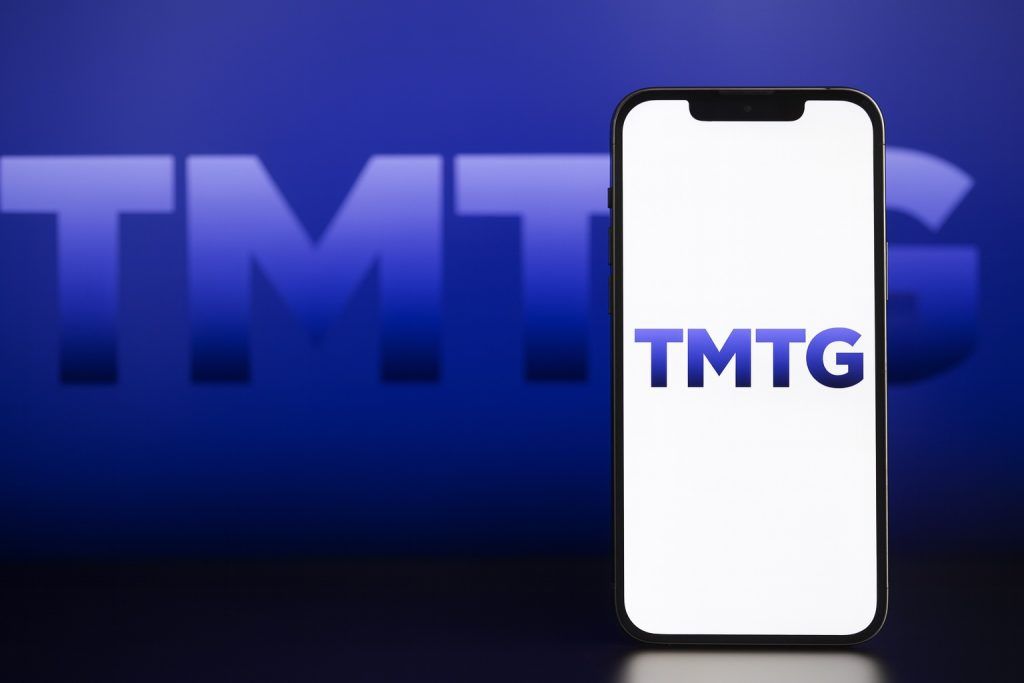Microsoft’s stock (NASDAQ: MSFT) is hovering near all-time highs in mid-November 2025, buoyed by robust earnings and optimism around its artificial intelligence (AI) and cloud businesses. Year-to-date, Microsoft shares have climbed roughly 30%, recently touching a market capitalization near $4 trillion [1]. A brief pullback in early November – prompted by profit-taking and valuation jitters in tech – is largely viewed by investors as a temporary “speed bump” rather than a trend reversal [2] [3]. As Microsoft’s U.S. stock futures indicate continued resilience, we analyze the current landscape and forecast what’s ahead, examining macroeconomic drivers, company-specific developments, analyst sentiment, and expert projections as of November 15, 2025.
Market and Macroeconomic Backdrop
Easing Interest Rates and Cooler Inflation: The macro environment has shifted in favor of equities like Microsoft. The U.S. Federal Reserve has begun easing monetary policy after an aggressive tightening cycle. In late October, the Fed cut its benchmark interest rate by 0.25% to a target range of 3.75%–4.00% [4] – its second consecutive cut – citing signs of cooling inflation and a softening labor market. Markets widely anticipate another quarter-point rate reduction at the Fed’s mid-December meeting [5], which would bring the rate down to around 3.5%–3.75%. Fed Chair Jerome Powell has cautioned that further moves are “not a foregone conclusion,” even as 80% of economists in a Reuters poll expect a December cut [6] [7].
Critically for tech stocks, inflation pressures have eased. The latest Consumer Price Index readings came in slightly cooler than expected, helping lift the S&P 500 and Nasdaq to record highs in late October [8]. This cooling inflation “opened the door for Fed rate cuts” and underpinned a year-end rally [9]. For interest-rate-sensitive growth stocks like Microsoft, falling yields reduce the valuation headwinds, providing a tailwind to investor sentiment.
Economic Resilience Amid Global Uncertainties: Despite higher interest rates earlier in the year, the U.S. economy has shown surprising strength. Second-quarter GDP growth was revised upward to 3.8% annualized, and robust business investment is helping offset softer consumer spending [10]. While growth is expected to moderate into 2026, the risk of a deep recession appears low – a positive sign for equity markets. “The U.S. economy’s strength supports risk-taking” and argues against any imminent market crash, one investment strategist noted [11] [12].
Global geopolitical events remain a wildcard. Ongoing conflicts and trade tensions (from Eastern Europe to the Middle East and U.S.–China tech frictions) pose potential risks to markets. Thus far, however, these issues have not derailed the broad rally in technology stocks. Investors have largely focused on fundamentals and “see [recent volatility] as a breather rather than a sign of deeper trouble” [13] [14]. Volatility in early November – partly triggered by worries of an AI valuation bubble and uncertainty over the pace of Fed rate cuts – has been viewed as normal profit-taking, not a fundamental shift [15] [16]. As one strategist put it, “It’s a speed bump. It’s not a wall… I don’t believe we have the preconditions for a bear market” [17].
Tech Sector Momentum: The broader tech sector, led by “Magnificent Seven” giants like Microsoft, Apple, and Alphabet, has powered the market’s gains in 2025. An AI-driven boom in capital expenditures and innovation has fueled investor enthusiasm. Federal Reserve officials have even highlighted Big Tech’s outsized role in driving U.S. economic growth through their AI investments [18]. That said, valuations are elevated, and some investors are wary of heights. The recent surge in tech spending – especially on AI infrastructure – raises the bar for future returns [19] [20]. Jamie McGeever, a Reuters columnist, notes that the top cloud and AI “hyperscalers” (Microsoft, Amazon, Alphabet, Meta) are on track to spend a combined $350 billion this year on data centers and AI, a pace that is beginning to eat into cash flows [21] [22]. This dynamic has stoked debate over whether today’s AI frenzy might echo the 1990s dot-com boom and bust [23]. For now, however, tech leaders like Microsoft have sustainable business models and continue posting huge profits [24], keeping most bulls firmly in the “buy on dips” camp.
Microsoft’s AI and Cloud-Powered Performance
Robust Earnings and Cloud Growth: Microsoft’s latest earnings underscore its strong position in the AI/cloud era. In late October, the company reported fiscal Q1 2026 (Jul–Sep 2025) revenue of $77.7 billion – up 18% year-on-year and topping analyst estimates of ~$75.3 billion [25]. Quarterly profit also beat expectations at $3.72 per share [26]. The standout driver was Microsoft’s Azure cloud unit, which saw revenue surge 40% in the quarter [27]. This growth outpaced market expectations (Visible Alpha had pegged Azure’s growth at ~38% [28]) and far exceeded the growth rate of Amazon’s AWS (which rose 20% in the same quarter) [29] [30]. Azure’s strength reflects booming demand for AI services on the cloud – in fact, Microsoft revealed that AI services contributed 13 percentage points of Azure’s growth last quarter, up from 12 points in the prior quarter [31].
Looking ahead, Microsoft forecasted Azure to grow ~37% in the current quarter (Oct–Dec 2025), slightly ahead of Wall Street estimates [32]. Total company revenue guidance of $79.5–$80.6 billion for the quarter was in line with consensus [33]. These rosy top-line figures demonstrate that Microsoft continues to monetize the AI trend effectively – from cloud computing contracts to AI-powered software offerings – even as it faces capacity constraints.
Aggressive AI Investment and Capex: To meet surging cloud and AI demand, Microsoft is investing heavily in infrastructure. Capital expenditures hit an all-time high of nearly $35 billion in the September quarter [34]. Management warned that annual capex will continue to rise this fiscal year, reversing earlier plans to moderate spending [35]. Much of this spend is pouring into data centers and AI supercomputing capacity. For example, Microsoft just announced a $10 billion investment to build an AI-focused data center hub in Sines, Portugal – one of its largest European projects ever [36]. In partnership with NVIDIA and others, Microsoft will deploy 12,600 next-gen GPUs at the site to bolster Azure’s AI cloud resources [37]. Such projects highlight Microsoft’s all-in commitment to being a leader in global AI infrastructure.
Investors have grown somewhat wary of these astronomical AI expenditures, especially as they weigh on free cash flow [38] [39]. Microsoft’s shares dipped ~4% in after-hours trading following its Q1 earnings release, largely due to concerns about ballooning capex and an “elusive” timeline to fully monetize AI [40] [41]. However, the company argues this spending is necessary to overcome capacity bottlenecks and secure future growth. CEO Satya Nadella told analysts that Microsoft is already achieving major efficiency gains – models are delivering “10× better performance for the price” as algorithms are optimized [42]. He expects AI demand to become “exponentially more” as costs come down and accessibility increases [43]. In other words, Microsoft is spending big now in anticipation of major future payoffs from AI-driven services.
AI Initiatives and Competitive Edge: Microsoft’s strategic moves in AI give it a strong competitive edge. The company’s deep partnership with OpenAI (the maker of ChatGPT) was recently restructured, cementing Microsoft’s stake at 27% (worth ~$135 billion) and ensuring access to OpenAI’s latest models and innovations [44]. This exclusive access has supercharged Azure’s appeal to enterprise customers and bolstered Microsoft’s ability to integrate cutting-edge AI across its products [45]. Indeed, Microsoft has rolled out AI “Copilot” assistants in everything from Office 365 and Windows to GitHub, directly monetizing AI by bundling these features into its dominant software suites [46] [47]. The near-monopoly Microsoft enjoys in enterprise productivity software (Office/365) gives it a ready channel to upsell AI capabilities like Microsoft 365 Copilot at premium pricing [48]. Early reception has been positive, and these AI features are expected to open new revenue streams over the coming year.
Microsoft is also pursuing a prudent multi-partner approach in AI. Besides OpenAI, it has invested in and partnered with other AI startups (e.g. a recent stake in Anthropic and collaborations with Meta’s open models) [49]. This diversification ensures Microsoft isn’t solely reliant on one AI vendor. The company even showed discipline by directing some AI workloads to competitors when needed – for example, allowing OpenAI to use Oracle’s cloud for certain needs so that Microsoft could prioritize capacity for higher-margin enterprise clients [50]. Such maneuvers illustrate Microsoft’s focus on “steering limited AI capacity toward more profitable customers,” as some analysts have noted [51].
Regulatory Landscape: On the regulatory front, Microsoft has navigated challenges relatively smoothly of late. In 2024 it closed its $69 billion Activision Blizzard acquisition after lengthy antitrust reviews, and in 2025 it proactively addressed an EU antitrust case over its bundling of Teams with Office. In September, European regulators accepted Microsoft’s concessions to unbundle Teams (or offer cheaper Office without it) for at least seven years [52] [53]. By widening the price gap between Office versions with and without Teams, Microsoft avoided a potentially hefty fine and signaled a more conciliatory stance toward antitrust concerns [54] [55]. This settlement, stemming from a Slack complaint, ensures customers in Europe can choose rival collaboration tools more easily [56]. The outcome shows Microsoft adapting its business practices to meet regulatory demands, which may ultimately reduce uncertainty for investors.
Meanwhile, broader tech regulation (such as prospective AI governance rules or U.S. antitrust scrutiny of big cloud providers) bears watching, but has yet to materially impact Microsoft’s operations. In fact, Microsoft’s willingness to cooperate – “implementing obligations promptly and fully,” as its EU government affairs VP pledged [57] – has earned it some goodwill. Barring any new investigations, regulatory issues are not expected to significantly impede Microsoft’s growth in the near term, though the company will remain under the watchful eye of global regulators given its size and influence.
Analyst Forecasts and Investor Sentiment
Wall Street’s outlook on Microsoft is overwhelmingly bullish. Nearly 99% of analysts tracked by Bloomberg currently recommend buying Microsoft stock [58]. Out of 73 sell-side analysts covering the company, 72 have “Buy” ratings and none advise selling [59]. This near-unanimous confidence was reinforced in late October when Guggenheim upgraded Microsoft to a Buy, citing its advantageous positioning in AI. “Microsoft and other hyperscalers clearly belong to the winning camp” in the AI race, Guggenheim’s analyst wrote, setting a price target of $586 (about 12% above the late-October share price) [60] [61]. Many other institutions have likewise lifted their targets; for instance, Morgan Stanley recently raised its MSFT target to $625 amid optimism over Azure’s growth and OpenAI integration [62] [63]. As of mid-November, the consensus 12-month price target for Microsoft sits around $615–620, implying roughly 20% upside from current levels [64]. Some more bullish analysts foresee the stock climbing into the mid-$600s or higher within a year (targets range up to ~$714 at the high end) [65].
Investor sentiment on Microsoft remains positive, underpinned by the company’s track record and AI potential. Microsoft is often touted as a core AI beneficiary that combines growth with stability. “Overall, investors still view Microsoft as a leading bet on AI,” noted one market observer after the company’s latest earnings [66]. Even when shares wobbled on spending concerns, many saw it as an opportunity. “We would be aggressive buyers on any pullbacks,” is a common refrain among bullish analysts [67]. The stock’s moderate pullback in early November was largely seen as healthy consolidation after a strong rally. “What we are starting to see now is some fear of heights and profit taking… I don’t think we are seeing any meaningful unwinding,” explained a portfolio co-chief at a volatility hedge fund [68]. In other words, few investors are heading for the exits; most are simply rotating or taking modest profits while maintaining a constructive longer-term view.
Market strategists also point to supportive underpinnings for Microsoft’s valuation. The Federal Reserve’s shift to easier policy has eased the pressure on high P/E stocks, and Microsoft’s own fundamental performance (double-digit revenue growth, expanding cloud margins) provides justification for its premium valuation. The stock currently trades around 32× forward earnings, slightly above its five-year average [69], but investors feel that premium is deserved given Microsoft’s dominant franchises and AI-driven growth runway. For context, Microsoft’s forward multiple is lower than some peers at the forefront of the AI boom (Nvidia’s valuation, for instance, is substantially higher). As long as Microsoft continues delivering solid results, institutional investors appear comfortable with its pricing. Fund flows data show broad institutional ownership – over 8,300 funds hold Microsoft shares, and institutional positions in MSFT have increased in recent quarters [70] [71]. The stock’s put-call options ratio of 0.7 also indicates a bullish options market positioning [72].
That said, Wall Street isn’t blindly euphoric. Analysts and investors do acknowledge risks and open questions. One concern is the lag between AI investment and payoff: Microsoft and peers are plowing billions into AI with the assumption of future returns, but it remains early. “Unless there is a surge in revenues from these activities, Big Tech is going to pump nearly all their free cash flow into capex in just a few years,” warns Bob Elliott of Unlimited Funds [73]. In other words, execution is key – Microsoft will need to start showing tangible monetization of AI (e.g. meaningful revenue from Copilot subscriptions, AI cloud services, etc.) to meet the market’s high expectations. Competition is another watch item: rivals like Google, Amazon, and even newer entrants (including Chinese AI firms) are racing to offer similar services, which could eventually pressure pricing or market share. Indeed, reports of cheaper AI models from China have sparked fears of an AI “price war,” though so far Microsoft’s enterprise focus and quality advantage have kept it above the fray [74] [75]. Regulators, as noted, remain a background risk too, in case of any antitrust or AI-related regulatory curveballs.
On balance, however, the sentiment skew is bullish. Microsoft’s stature as a cash-rich, diversified tech leader gives investors confidence that it can navigate challenges. The company’s history of weathering past transitions – from PC to cloud, and now cloud to AI – bolsters the view that it will continue to thrive (and reward shareholders) in the next evolution of tech. As Phil Orlando, chief market strategist at Federated Hermes, summed up, short-term market choppiness is actually seen as a “buying opportunity” by many, given the positive long-term fundamentals [76].
Forward-Looking Projections
AI Monetization and Growth Outlook: Going forward, analysts expect Microsoft to maintain double-digit revenue growth into 2026, fueled largely by Azure’s momentum and new AI services. The company’s own forecasts of high-30s percentage growth in Azure for the rest of this fiscal year provide a baseline [77]. If Microsoft can continue converting AI enthusiasm into cloud contracts and software subscription boosts (e.g. via Copilot add-ons), it could see an additional wave of revenue in 2026–2027. CEO Satya Nadella’s vision is that we are at the “early days” of an AI supercycle – as AI becomes more efficient and widely adopted, demand could increase “exponentially” [78]. Microsoft’s massive installed customer base (from Windows to Office, server tools, and Azure clients) offers a natural springboard to upsell these AI capabilities at scale. Many experts believe Microsoft is uniquely positioned to “capture value” from AI due to this integration across its ecosystem [79] [80]. For example, every Office 365 user is a potential buyer of Microsoft’s AI Copilot, and every Azure client might leverage Microsoft’s AI models or chips-as-a-service.
That said, the pace of AI-driven financial returns remains a key question. Some industry veterans caution that while AI will create enormous economic value, the distribution of that value is uncertain [81]. A Columbia Business School professor recently observed that “the value creation is certainly there (with AI)… but will that value flow back to the companies making these AI investments? For me, the answer is no” [82]. This perspective suggests that AI could become a commoditized capability, or that the gains might manifest in productivity broadly rather than solely as profits for Microsoft. Microsoft’s challenge is to prove this wrong by capturing outsized share of the AI value it’s helping create. Early signs are encouraging – Microsoft’s unique partnerships (like OpenAI) and its end-to-end AI stack (infrastructure to applications) give it pricing power that smaller players lack.
Financial and Stock Projections: On the financial front, consensus estimates call for Microsoft’s annual revenue to approach $300 billion in the coming year [83], with mid-to-high single digit percentage increases in earnings per share as AI investments temper near-term margins. As heavy capex continues into 2026 (management indicated elevated spending through at least June 2026 to alleviate capacity constraints [84]), free cash flow growth may slow or even dip in the very near term. However, Wall Street largely views this as short-term pain for long-term gain. By late 2026, capital spending is expected to normalize, just as many of the AI initiatives start contributing more meaningfully to sales. This could set the stage for margin expansion and reaccelerating earnings growth in 2027 and beyond, if all goes according to plan.
For Microsoft’s stock itself, most analysts see more upside ahead over the next 12–18 months. As noted, price targets clustered around the low-to-mid $600s suggest roughly 15–25% appreciation potential from current levels [85]. In bullish scenarios where AI adoption and economic conditions exceed expectations, some forecasters don’t rule out Microsoft’s stock approaching the $700 mark in the coming years. Notably, Microsoft briefly joined Apple and Nvidia in the exclusive “trillion-dollar club” of mega-cap stocks this year – even hitting a $4 trillion valuation milestone [86]. If its AI bets pay off, Microsoft could vie for the title of the world’s most valuable company. (At present, it sits just behind Nvidia, which stunned markets by skyrocketing to a $5 trillion valuation amid the AI chip boom [87].) While such lofty valuations invite talk of bubbles, analysts argue Microsoft’s fundamentals (diverse revenue streams and proven execution) support its valuation better than some peers.
Risks and Wildcards: Looking ahead, a few wildcards could influence Microsoft’s trajectory. One is the macroeconomic climate – if inflation were to flare up again or the Fed pauses rate cuts sooner than expected, high-valuation stocks like MSFT could see renewed pressure. Conversely, a clearly telegraphed Fed easing cycle through 2026 would likely boost Microsoft’s stock further by lowering discount rates and encouraging risk appetite. Another factor is the global economy: a significant downturn in enterprise IT spending or a sharp slowdown in cloud adoption would directly hit Microsoft’s growth. So far, enterprise demand remains healthy, but investors will watch corporate tech budgets into 2026. Geopolitical developments (for instance, export restrictions on tech to China, or instability that jolts energy prices and inflation) also bear monitoring, as they could indirectly impact Microsoft’s costs and customers.
On the competitive front, AI competition is intensifying. Google is expanding its cloud AI offerings; Amazon is leveraging its dominance with new AI chips and partnerships; and upstarts continue to innovate. Microsoft will need to keep its innovation edge – through continued R&D and strategic deals – to maintain Azure’s momentum and its lead in AI-enhanced software. The good news: Microsoft’s early aggressive moves (such as integrating GPT-4 into Bing and launching Copilots across its suite) show it plans to stay on offense. Its sizable war chest (over $100 billion in cash equivalents) also gives flexibility for acquisitions or investments to plug any strategic gaps.
Bottom Line – Outlook: The consensus among experts is that Microsoft’s future remains brightly optimistic heading into 2026. The convergence of easing macroeconomic headwinds (lower interest rates, tame inflation) and strong company-specific growth drivers (cloud, AI, enterprise software) provides a favorable backdrop. “The bull market has strong underpinnings,” as one analyst put it [88] – Microsoft exemplifies this with its mix of cyclical tailwinds and structural growth. Barring unforeseen shocks, many foresee Microsoft continuing to deliver steady gains. Veteran investors note that periods of volatility could occur (as seen recently), but those are generally seen as opportunities rather than alarms [89] [90]. In fact, some warn that the biggest mistake now would be to abandon tech leadership too soon: “I legitimately think one of the biggest risks is taking money off the table” in names like Microsoft, one portfolio manager argued [91].
In summary, Microsoft’s stock futures – both literally and figuratively – look strong as of mid-November 2025. The company sits at the nexus of powerful trends in technology and stands to benefit from a more accommodative economic environment. While challenges such as high spending and rising expectations persist, Microsoft has the strategic clarity and financial firepower to navigate them. With nearly all analysts in agreement on its upside and a stream of positive news on AI and cloud growth, Microsoft enters late 2025 as a market bellwether positioned for further gains. Investors will be watching its execution closely, but if current momentum holds, Microsoft’s next chapters could see it reaching new heights in valuation and innovation, firmly leading the pack in the evolving tech landscape [92] [93].
Sources: Bloomberg; Reuters [94] [95] [96] [97]; CNBC; Federal Reserve statements; Company filings. (All information current as of November 15, 2025.)
References
1. www.reuters.com, 2. www.reuters.com, 3. www.reuters.com, 4. www.reuters.com, 5. www.reuters.com, 6. www.reuters.com, 7. www.reuters.com, 8. www.reuters.com, 9. www.reuters.com, 10. www.reuters.com, 11. www.reuters.com, 12. www.reuters.com, 13. www.reuters.com, 14. www.reuters.com, 15. www.reuters.com, 16. www.reuters.com, 17. www.reuters.com, 18. www.reuters.com, 19. www.reuters.com, 20. www.reuters.com, 21. www.reuters.com, 22. www.reuters.com, 23. www.reuters.com, 24. www.reuters.com, 25. www.reuters.com, 26. www.reuters.com, 27. www.reuters.com, 28. www.reuters.com, 29. www.reuters.com, 30. www.reuters.com, 31. www.reuters.com, 32. www.reuters.com, 33. www.reuters.com, 34. www.reuters.com, 35. www.reuters.com, 36. www.reuters.com, 37. www.reuters.com, 38. www.reuters.com, 39. www.reuters.com, 40. www.reuters.com, 41. www.reuters.com, 42. www.reuters.com, 43. www.reuters.com, 44. www.reuters.com, 45. www.reuters.com, 46. www.itiger.com, 47. www.itiger.com, 48. www.itiger.com, 49. www.reuters.com, 50. www.reuters.com, 51. www.reuters.com, 52. www.reuters.com, 53. www.reuters.com, 54. www.reuters.com, 55. www.reuters.com, 56. www.reuters.com, 57. www.reuters.com, 58. www.itiger.com, 59. www.itiger.com, 60. www.itiger.com, 61. www.itiger.com, 62. finance.yahoo.com, 63. www.quiverquant.com, 64. fintel.io, 65. fintel.io, 66. www.reuters.com, 67. finance.yahoo.com, 68. www.reuters.com, 69. www.reuters.com, 70. fintel.io, 71. fintel.io, 72. fintel.io, 73. www.reuters.com, 74. www.reuters.com, 75. www.reuters.com, 76. www.reuters.com, 77. www.reuters.com, 78. www.reuters.com, 79. www.itiger.com, 80. www.itiger.com, 81. www.reuters.com, 82. www.reuters.com, 83. fintel.io, 84. www.reuters.com, 85. fintel.io, 86. www.reuters.com, 87. www.reuters.com, 88. www.reuters.com, 89. www.reuters.com, 90. www.reuters.com, 91. www.reuters.com, 92. www.itiger.com, 93. www.reuters.com, 94. www.reuters.com, 95. www.reuters.com, 96. www.reuters.com, 97. www.itiger.com







